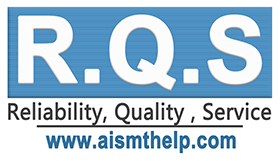Thirteen standards commonly used in SMT
1) IPC-ESD-2020: Joint Standard for Electrostatic Discharge Control Program Development. Includes the necessary design, establishment, implementation, and maintenance of electrostatic discharge control procedures. Guidance is provided for handling and protection during ESD-sensitive periods based on historical experience with certain military and commercial organizations.
2) IPC-SA-61A: Manual for semi-aqueous cleaning after welding. Covers all aspects of semi-aqueous cleaning, including chemical, production residues, equipment, processes, process controls, and environmental and safety considerations.
3) IPC-AC-62A: Aqueous cleaning manual after welding. Description of manufacturing residues, types and properties of aqueous cleaners, processes, equipment and processes for aqueous cleaning, quality control, environmental controls and employee safety, and cost of determination and determination of cleanliness.

4) IPC-DRM-4 0E: Desktop Reference Manual for Through-Hole Solder Joint Evaluation. Detailed description of components, hole walls, and solder surface coverage as required by the standard, in addition to computer-generated 3D graphics. Covers tin fill, contact angle, dip tin, vertical fill, pad coverage, and numerous solder joint defect situations.
5) IPC-TA-722: Welding Technique Evaluation Manual. Includes 45 articles on all aspects of soldering technology, covering general soldering, soldering materials, hand soldering, batch soldering, wave soldering, reflow soldering, vapor phase soldering, and infrared soldering.
6) IPC-7525: Template Design Guidelines. Provides guidelines for the design and manufacture of solder paste and surface mount adhesive-applied stencils i also discusses stencil design using surface mount technology and introduces ?Kunhe with through-hole or flip-chip components Techniques, including overprinting, double-printing, and staged stencil design.
7) IPC/EIA J-STD-004: Specification Requirements for Soldering Flux 1 includes Appendix I. Contains technical indicators and classifications of rosin, resin, etc., organic and inorganic fluxes classified according to the content and activation degree of halide in the flux; also includes the use of flux, substances containing flux, and low-level flux used in no-clean processes. Residual flux.
8) IPC/EIA J-STD-005: Specification Requirements for Solder Paste One includes Appendix I. Lists solder paste characteristics and technical specification requirements, as well as test methods and metal content standards, as well as viscosity, slump, solder ball, tack and solder paste wettability.
9) IPC/EIA J-STD-0 06A: Specification requirements for electronic grade solder alloys, fluxes and non-flux solid solders. Provides terminology, specification requirements and test methods for electronic grade solder alloys, for rod, ribbon, powdered flux and non-fluxed solders, for electronic solder applications, and for special electronic grade solders.

10) IPC-Ca-821: General requirements for thermally conductive adhesives. Includes requirements and test methods for thermally conductive dielectrics that bond components into place.
11) IPC-3406: Guidelines for Coating Adhesives for Conductive Surfaces. Provides guidance on the selection of conductive adhesives as solder alternatives in electronics manufacturing.
12) IPC-AJ-820: Assembly and Soldering Manual. Contains descriptions of inspection techniques for assembly and soldering, including terms and definitions; types of printed circuit boards, components and pins, materials for solder joints, component mounting, specification references and outlines for design; soldering techniques and packaging; Cleaning and lamination; quality assurance and testing.
13) IPC-7530: Temperature Profile Guidelines for Batch Soldering Processes (Reflow and Wave Soldering). Various test methods, techniques and methods are used in the acquisition of temperature curves to provide guidance for building better graphs.


